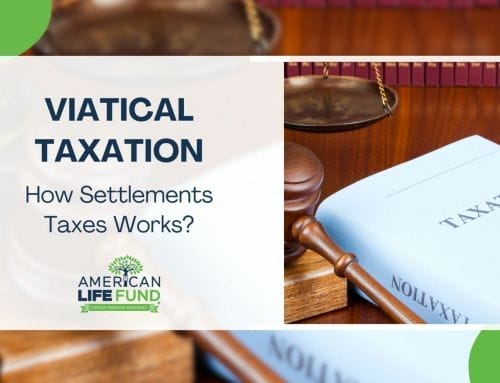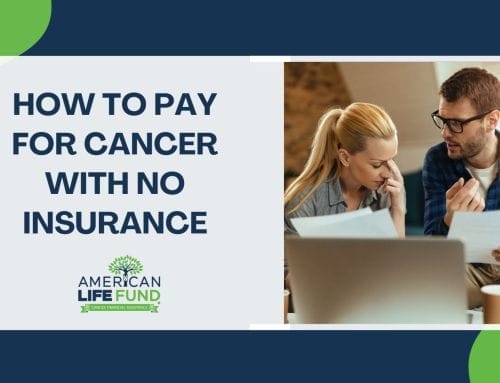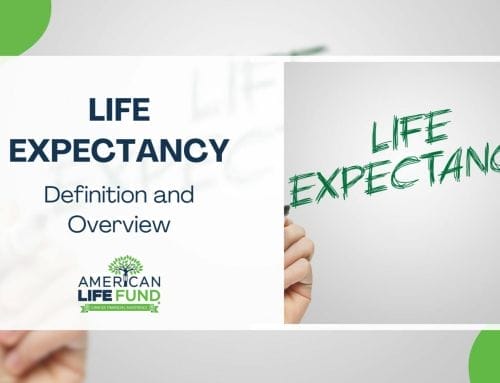In times of health and financial challenges, such as a shortened life expectancy due to a serious illness, individuals often seek avenues to ease their monetary pressures. Viatical settlements stand out as a preferred option, allowing policyholders to access a lump sum by selling their life insurance policy. While a viatical loan offers a similar approach by borrowing against the policy, they come with their own implications.
This article dives into viatical loans, presenting a compelling case for the benefits of viatical settlements over loans. Through comprehensive research and experience, we aim to guide you in making the best decision for your unique situation.

What Is A Viatical Loan?
A viatical loan is essentially a non-secured loan against a life insurance policy. The life insurance loan amount is typically determined based on the policy’s value, considering the policyholder’s current health conditions. One notable aspect is that the loan amount is reduced, considering any future life insurance premiums that need to be paid and anticipated investment returns for the lender. While this offers immediate financial relief, it comes with a higher interest rate and additional fees than traditional loans.
A viatical settlement involves selling the life insurance policy to third-party companies in exchange for a lump sum. This sum of money is usually higher than what you would receive from a viatical loan and doesn’t involve accruing interest or additional fees.
The term “viatical” translates to “provisions for a journey.” The word describes a class of transactions that allow seriously ill patients to cash in their insurance policies early. In some cases, people refer to these products as life settlements.
How Do Viatical Loans Work?
With viatical loans, you take out an unsecured loan against your life insurance policy at a higher than usual interest rate and additional fees. The company gives you a loan based on the value of your policy and your current health conditions. In all cases, the loan amount is reduced to account for any future life insurance premiums that still need to be paid, plus anticipated investment returns to the lender.
How Viatical Settlements Work
Viatical loans are financial instruments personalized for individuals grappling with serious health challenges. These loans provide a lifeline by allowing them to tap into the value of their life insurance policies. Here’s a comprehensive breakdown of how viatical loans function:
- Initiation of the Loan Process: The policyholder approaches a lending institution or a company specializing in viatical loans. The primary requirement is having a life insurance policy.
- Assessment of the Policy: The lending entity evaluates the life insurance policy’s value and the policyholder’s current health conditions. Researchers and experts in the field often use actuarial tables and medical reports to estimate life expectancy, which plays a significant role in determining the loan amount.
- Loan Amount Determination: The loan offered is a percentage of the policy’s death benefit. However, this amount is adjusted to consider future life insurance premiums and the anticipated returns for the lender. Studies show that the sicker the individual, the higher the potential loan amount, given the increased risk to the lender.
- Interest and Fees: Viatical loans typically have higher interest rates than standard loans. This is due to the unique nature of the loan, where repayment is contingent on the policyholder’s death. Additionally, there might be origination fees or other associated charges.
- Repayment: Unlike traditional loans, viatical loans do not have monthly repayments. Instead, the loan amount, along with accumulated interest, is deducted from the policy’s death benefit upon the policyholder’s passing. The remaining amount, if any, is then disbursed to the original beneficiaries of the policy.
- Retaining Policy Ownership: A critical distinction between viatical loans and settlements is that in the case of a loan, the policyholder retains ownership of the policy. This means they continue to be responsible for premium payments, and the policy’s beneficiaries still stand to receive any remaining death benefit after the loan and interest are settled.
- Potential for Outliving the Loan: One inherent risk with viatical loans is the possibility of the policyholder outliving the loan’s anticipated term. If this occurs, the interest would continue to accrue, potentially exceeding the policy’s death benefit.
Viatical loans offer immediate financial relief, but it’s important to understand their mechanics and implications thoroughly. Oftentimes, getting a viatical settlement makes more sense than a viatical loan. As with any financial decision, consulting with personal finance professionals such as a financial advisor, diving into relevant research, and reviewing statistics can provide invaluable insights for potential borrowers.
What Are The Eligibility Requirements for Viatical Loans?
Understanding the eligibility requirements and why individuals opt for viatical loans provides clarity for those navigating this financial option. Here’s a detailed exploration of both aspects:
- Life Insurance Policy Ownership: The individual must own a life insurance policy. In many cases, this must be a permanent life insurance policy. The type of policy, whether term, whole, or universal, influences eligibility and loan amount.
- Medical Condition: Viatical loans are primarily designed for individuals with a serious or terminal illness. A medical evaluation, supported by documentation and diagnosis, is typically required.
- Policy Value: The policy should have a certain minimum death benefit paid to be considered. Some lenders might have a set minimum policy cash value for eligibility.
- Policy Age: Some lenders require the policy to be in force for a specific period, ensuring it’s beyond any contestability period set by the insurance company.
- Premium Payment Status: The policy should be in good standing, with all premiums up-to-date. If there are outstanding premiums, they might be factored into the loan amount.
- No Policy Liens: The policy should be free from existing liens or loans.
Why would someone consider a viatical loan?
Here are a few reasons a person would consider a viatical loan:
- Immediate Financial Relief: Individuals facing hefty medical bills or other unforeseen expenses related to their health condition might opt for a viatical loan to access immediate funds.
- Maintain Policy Ownership: Unlike a viatical settlement where the policy is sold, a viatical loan allows the individual to retain ownership, ensuring beneficiaries receive any remaining death benefit after loan repayment.
- Absence of Monthly Repayments: Given the nature of viatical loans, borrowers are not burdened with monthly repayments, which can be beneficial during challenging times.
- Flexibility: The funds from a viatical loan can be used for any purpose, be it medical expenses, daily living costs, or fulfilling a personal wish.
- Alternative to Policy Surrender: For those considering surrendering their policy for its cash value, a viatical loan might offer a higher amount.
- Avoidance of Traditional Loans: Given the unique structure and repayment method of viatical loans, they might be more appealing than traditional loans, especially for those unsure about their ability to manage regular repayments.
What Are The Pros and Cons of a Viatical Loan Through A Life Insurance Policy?
A viatical loan can appear as a beacon of hope for many, but like all financial instruments, viatical loans come with their own set of advantages and disadvantages. Drawing from extensive research, statistics, and expert opinions, let’s delve into the pros and cons of opting for a viatical loan against a life insurance policy.
Pros of Viatical Loans
- Immediate Financial Access: A viatical loan provides quick cash upfront, which can be especially beneficial for addressing urgent medical bills or other pressing expenses.
- Retention of Policy Ownership: Taking a loan allows policyholders to retain ownership. This means beneficiaries still receive a portion of the death benefit after settling the loan.
- No Monthly Repayments: Borrowers are not burdened with the stress of monthly repayments. The loan and its accumulated interest are deducted from the death benefit.
- Flexible Usage: There are no restrictions on how the loan amount can be utilized, offering flexibility to borrowers in addressing their unique needs.
- Credit Score Irrelevance: The loan’s approval is based on the policy’s value and the policyholder’s health condition, not credit history. This is beneficial for those with less-than-stellar credit scores.
- Potential Tax Benefits: In some circumstances, the proceeds from viatical loans may be tax-free. However, consulting with a tax professional is recommended.
Cons of Viatical Loans
- High-Interest Rates: Viatical loans typically have higher interest rates than traditional loans due to their non-standard nature.
- Reduced Death Benefit: Beneficiaries will receive a reduced death benefit, as the loan amount plus interest is deducted upon the policyholder’s passing.
- Accrued Interest: If the policyholder outlives the expected term, interest accumulates, which might result in a larger debt than anticipated.
- Policy Premiums: The responsibility of paying the policy premiums remains with the policyholder, which can be a financial strain.
- Potential Loss of Policy: If the accrued interest and loan amount exceed the policy’s death benefit, the policy might lapse.
- Complexity: Viatical loans can be complex to understand, especially concerning interest calculations and long-term implications.
- Potential Tax Implications: Sometimes, the loan might have tax implications. It’s vital to seek advice from tax professionals.

Similarities Between a Viatical Settlement And A Viatical Loan
There are also some similarities between these two services. Generally, in most cases, your credit history and credit score are not considered. These loans and settlements are based on the life insurance policy’s face value and other factors listed above. They aren’t dependent on your credit score like traditional loans. These programs also don’t consider your employment status or assets.
Alternatives to Viatical Loans
Viatical Settlements:
In a viatical settlement, you sell your life insurance policy to a third-party company for a lump sum. The viatical settlement company then becomes the policy beneficiary and receives the death benefit upon the policyholder’s passing.
Benefits:
- Immediate Lump Sum Payment: Provides cash immediately and typically a larger payout than a viatical loan.
- No More Premiums: Once the policy is sold, the responsibility of premium payments shifts to the buyer, alleviating the financial burden from the seller.
- No Debt: Unlike a loan, there’s no debt or interest accumulation, ensuring a clean financial slate for the policyholder.
- Flexibility: The received funds have no restrictions and can be used as desired, be it for medical expenses, daily living costs, or other personal wishes.
- Recommendation: Given its advantages and straightforward nature, many financial experts lean towards viatical settlements as a preferred choice for individuals seeking financial relief.
If you want to apply for a viatical settlement, contact American Life Fund today. We have a quick and easy application process involving only two easy forms. Then, we look at your medical records, and if you qualify, we send you documents to finalize everything.
Life Insurance Policy Surrender:
This involves giving up the policy in exchange for its cash surrender value. The payout is often lower than you might get from a viatical settlement or loan. Additionally, giving up the policy means beneficiaries receive no death benefit.
Life Insurance Policy Loans:
Similar to viatical loans but offered directly by the insurance company. Like viatical loans, a life insurance loan comes with interest, and failure to repay reduces the death benefit.
Home Equity Loans or Reverse Mortgages:
For homeowners, these options allow them to borrow against their home’s equity. A home equity loan will come with interest, and you risk losing the home if you can’t keep up with the payments.
Personal Loans:
Traditional loans from banks or credit unions. Personal loans require good credit and come with high interest. Additionally, they might not offer the large sums available through viatical settlements.
How is the value of a viatical loan determined?
The value of a viatical loan is primarily determined by the death benefit of the life insurance policy, the policyholder’s current health condition, and estimated life expectancy. Lenders use actuarial tables and medical reports to estimate life expectancy, significantly influencing the loan amount. Additionally, considerations like future insurance premiums and anticipated investment returns to the lender are factored in to calculate the final loan value.
What happens to the death benefit of my life insurance policy in a viatical loan?
When you take out a viatical loan, the death benefit of your life insurance policy is used as collateral. Upon the policyholder’s passing, the lender claims the loan amount plus any accumulated interest from the death benefit. The remaining amount, after deducting the loan and interest, is then disbursed to the original beneficiaries of the policy.
What is the usual life expectancy that is accepted for a viatical loan?
The accepted life expectancy for a viatical loan varies by lender but typically is 2 years. Those with a shorter life expectancy often receive a higher percentage of their policy’s death benefit as a loan.
What are the typical viatical loan rates?
Viatical loan rates vary widely based on the lender and the perceived risk associated with the borrower’s life expectancy. Typically, these rates are higher than conventional loans, ranging from 10% to 30%.
What is a viatical loan maximum amount?
The maximum amount for a viatical loan is typically a percentage of the life insurance policy’s death benefit, ranging from 50% to 80%, depending on the policyholder’s health condition and estimated life expectancy.





